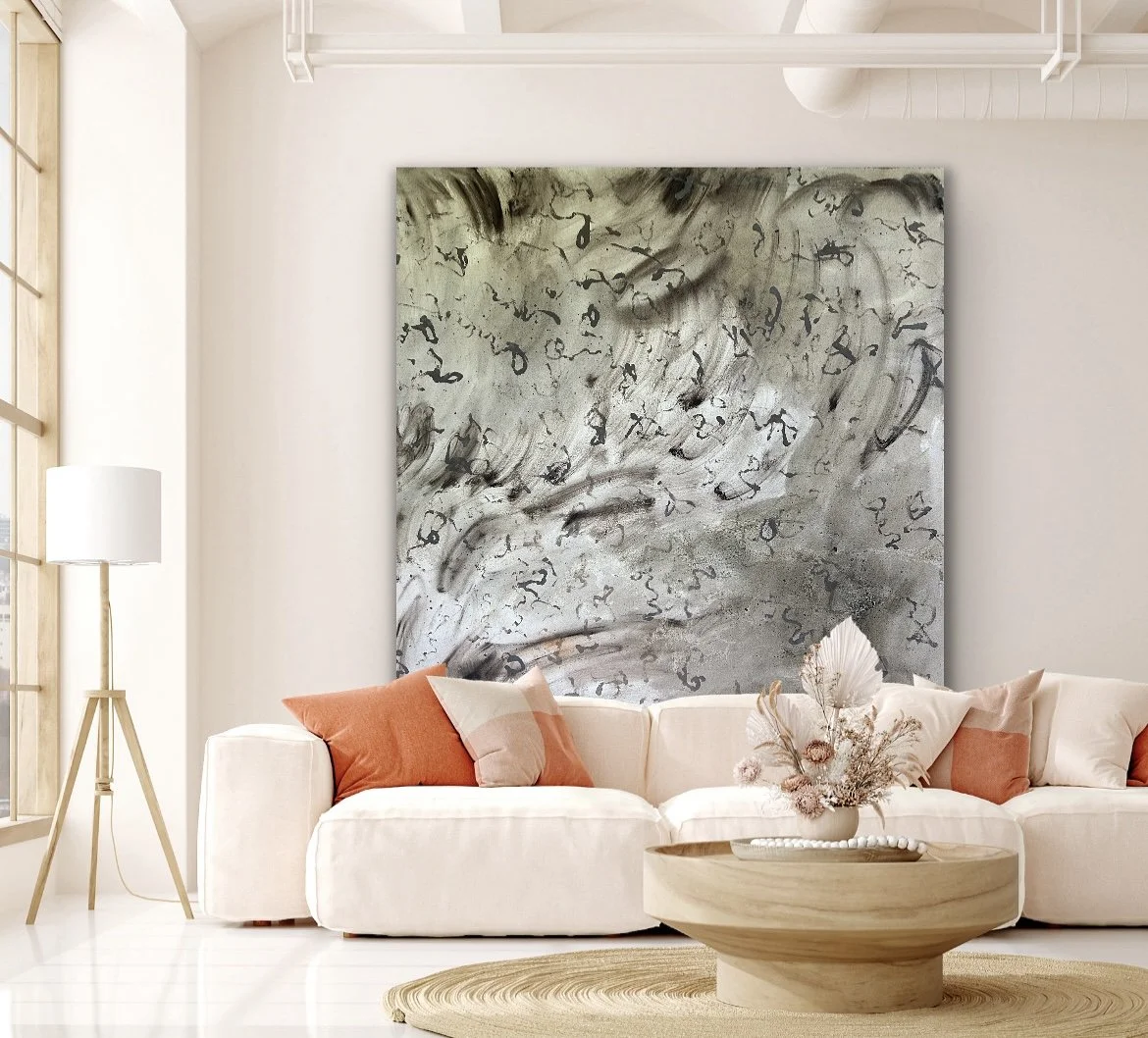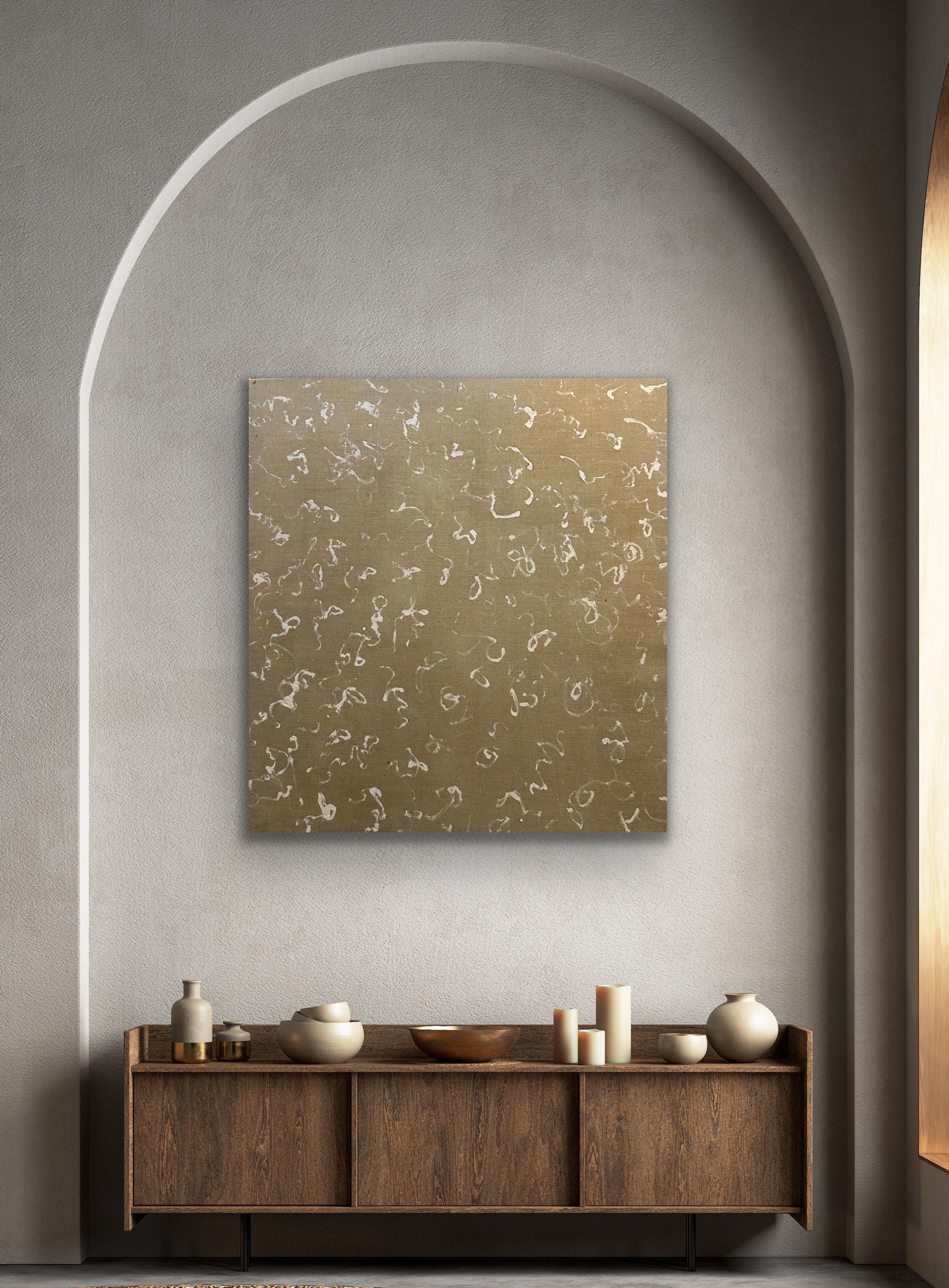Painting as a Struggle for Communication
The square, long enshrined in the discourse of modernist abstraction, emerges here less as a timeless formal unit than as a historically and culturally overdetermined site. As Rosalind Krauss argued in Grids (1979), the form came to embody modernism’s pursuit of autonomy, order, and transcendence. Yet in these works, the square is reconfigured, not as a closed system but as an unstable ground, haunted equally by the rhetoric of modernist purity and by vernacular textile traditions, particularly quilting, where repetition, pattern, and labor articulate narratives of survival, community, and gendered forms of making (Parker, The Subversive Stitch, 1984).
Within this tension, painting is figured as a form of communicative struggle. The brushmark resists functioning as a vehicle of immediate expression; instead, it falters, hesitates, and stumbles. Here one might recall Roland Barthes’ notion of writing as a “stammering of language” (The Rustle of Language, 1989), where meaning is perpetually deferred, caught between presence and absence. Each painted gesture operates as both an index of intention and a sign of its incompletion, speaking precisely through its failure to cohere.
The surface of the painting becomes what Jacques Derrida describes as différance: a site where signification is endlessly postponed, where the square’s modernist promise of resolution collapses into contingency, rupture, and erasure. The layered brushstrokes and interruptions on the canvas echo what Hélène Cixous has called the “infinite rehearsal” of expression (Coming to Writing, 1991), an articulation that can never arrive at finality.
In this sense, the square no longer functions as a guarantor of order but as a destabilized field, simultaneously invoking and undermining the legacies of both modernist formalism and craft traditions. These works position painting not as the realization of form but as the exposure of its impossibility: a practice of communication that acknowledges its own insufficiency. What results is an articulation of painting, where the impossibility of transparent communication becomes its most urgent subject.

